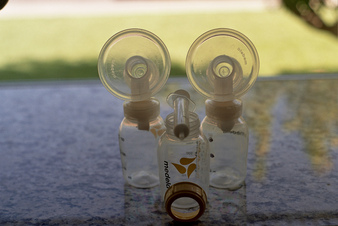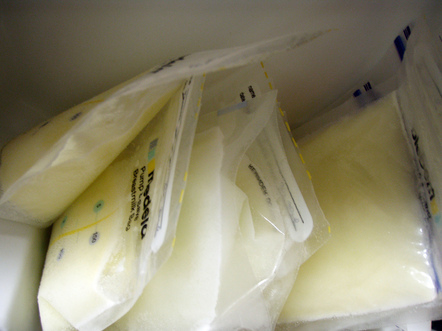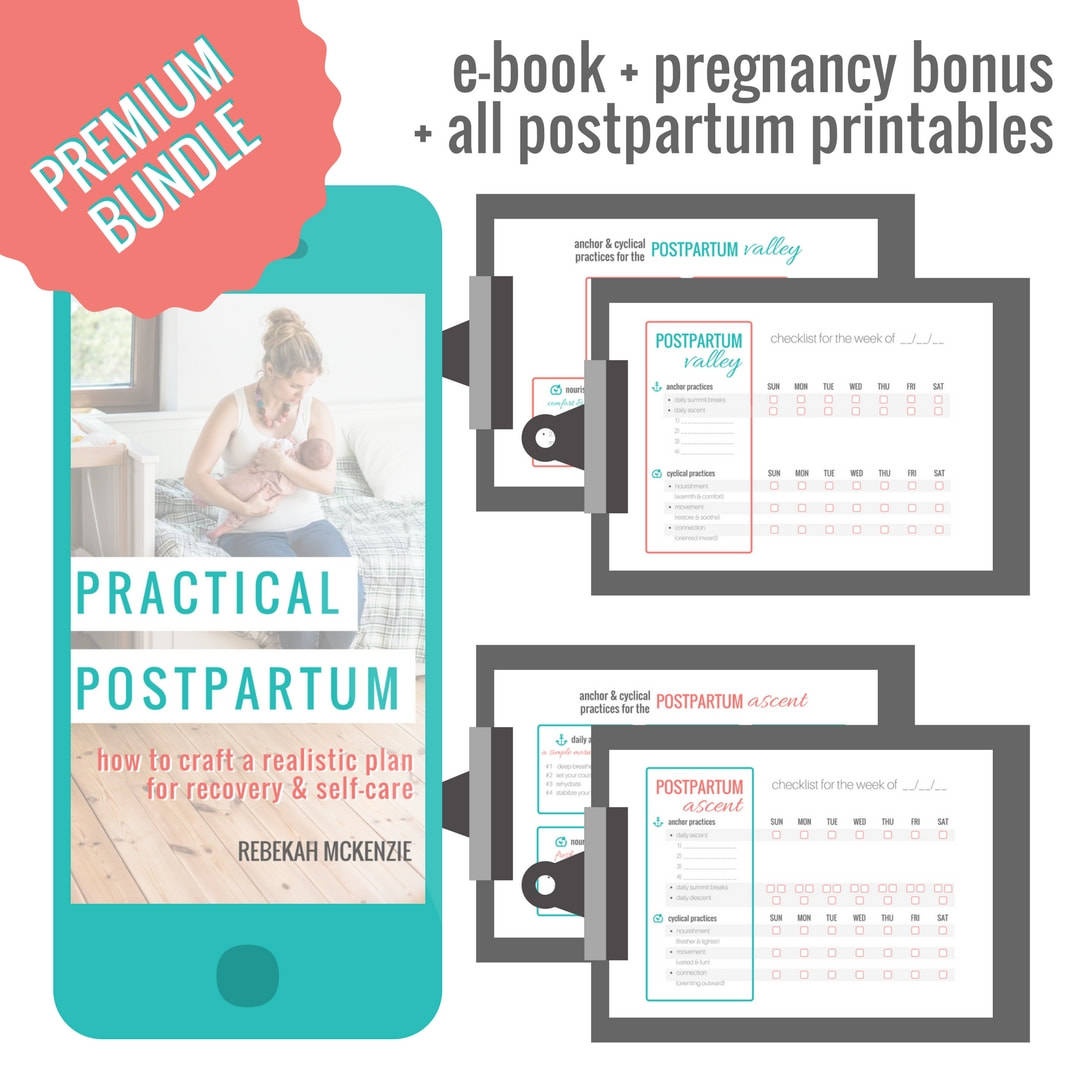 I sat on the couch next to her as she peacefully nursed her beautiful two-week-old daughter, a strand of misplaced hair hanging over her sleep deprived eyes. "I feel like I JUST figured out breastfeeding!" she exclaimed. "And now that we have all the kinks worked out, I am totally scared about what will happen when I have to go back to work in two months." I knew exactly how she felt. I breastfed my first three children--my boys--while working full time. Fortunately for me, I had a mostly positive, successful experience while pumping 3-4 times a day. But that is not the reality for many mothers who return back to work. The number one worry many mothers express to me is their ability to step away from their job for even 10 minutes to pump.The second concern they have is "where will I pump?"--a very valid concern since many workplaces lack a "real" (aka, appropriate) place to pump (see here for a slideshow of workplace pumping "rooms") I pumped for years in the employee bathroom at my job. And faced passive pressure when it came to how long my pumping sessions lasted. "Wow, that took a really long time," a coworker would comment. Or, from my boss, "It's already time for you to pump AGAIN?" Aside from these concerns, mothers going back to work face other environmental elements that can impact their breastfeeding relationship--insecurity about milk supply, feelings associated with being separated from their baby for the first time or for long periods of time, and the day-to-day pressure of balancing work expectations with being a new mom. So what can a new mom do to help their transition from new mommyhood to new working mommyhood? 1. KNOW YOUR RIGHTS Fortunately, things are changing, and employers are being held responsible for supporting breastfeeding employees. Reuter's just released an article on these new expectations set forth by the Affordable Care Act. 2. HAVE AN HONEST DISCUSSION WITH YOUR EMPLOYER Communicate what you need and want to support your breastfeeding relationship BEFORE you go back to work. Do you need a place to pump? Better to have it set up before you are sitting at your desk and catch a glimpse of your baby's photo and have to scramble for your pump because your milk came in and started spraying everywhere. Let your employer know that it will be unpredictable as to how often and how long your pumping sessions will be. 3. GET SUPPORT Go to La Leche League meetings. Hire me (one of my offerings is a Back to Work Breastfeeding Course). Hook up with other working-while-breastfeeding mommas. Working mommas need a very different type of support than stay-at-home mothers in my experience. 4. GET AN AWESOME PUMP None of this "I can just use the manual pump I got from the hospital." Nope. Not gonna work for most mommas. In order to sustainably maintain your supply and be pumping 3-4 times per day several days a week, a dual electric pump made by a REPUTABLE brand (check customer reviews) is necessary. Carpal tunnel syndrome is the last thing a new momma needs. It is an investment well worth it ($300 for a good new pump that will last years pales in comparison to the $20-$40 per week that formula costs). And you may not need to foot the bill for a great pump in the end--many insurance companies as well as WIC and Medicaid now have programs to cover the cost of a pump. Call your insurance provider to find out. In addition, breastfeeding and pump-related items are now tax-deductible, so save your receipts for all those breast pads, storage bags and containers, and accessories! Learn to use your pump and all it's parts BEFORE you go back to work--preferably within a few weeks of your baby's birth. Take it apart and put it back together and figure out how you will clean it and transport it on a daily basis. Figure out ahead of time which settings are right for you so you aren't trying to learn the difference between the "let down" and "suction" buttons during your first pumping attempt at work. 5,UNDERSTAND THAT THE PHYSIOLOGY OF BREASTFEEDING IS DIFFERENT WHEN PUMPING REGULARLY A mother who does not pump will not have the same breastfeeding experience or challenges as a momma who pumps. Your pump is plastic. It is not soft and warm and full of oxytocin and prolactin-releasing pheromones like your baby. It does not form to your breast the way your baby's cute little wet mouth does. It doesn't coo. It sounds like a yellow submarine. It's like comparing hugging a puppy vs. a robot. It just isn't the same. You may have to work a little harder to build and maintain your supply as your body figures out how to respond to the pump. 6. UNDERSTAND YOUR LIMITS Motherhood is stressful enough. When we add in the obstacles of being a new mom, the emotions that come with the postpartum period, breastfeeding for the first time, and then returning to work within 3 months of birth, life can seem overwhelming. Breastfeeding can take MONTHS to get well-established--and just because you've breastfed before doesn't mean anything. Every baby presents new challenges. Don't feel like a bad mom if you need to reassess what is and isn't working for your family. For some, this may mean taking it one day at a time. For others, it will mean breastfeeding as long as possible but then supplementing or transitioning to formula. For some, it will mean rethinking the structure of the home and if working is absolutely necessary, or if maternity leave can be lengthened or if a part-time transition back to work might be possible. For every momma, it will mean that each day of breastmilk baby gets is a total win. 7. CELEBRATE You're doing great Momma--don't second guess yourself or compare yourself to others. Your body is amazing. It just grew a person, then went through the incredible transition of giving birth to that person, then it started FEEDING that person. If men could do that, they would be all over the bragging rights.
2 Comments
Heidi
8/8/2014 07:53:09 am
What a great article! Numbers 6 and 7 really resonate with me. I was very disappointed when I had to supplement and then ultimately switch to formula. It was a big factor in my decision to stay home for my next baby.:)
Reply
Leave a Reply. |
This is us.We are Women. We are Moms. We are here to help your family blossom. Archives
September 2019
Search
All
|
Building 4
Pensacola, Florida, 32504
We proudly provide
Childbirth Education, Placenta Encapsulation, Lactation Consultations & Doulas
in Pensacola, Milton, Pace, Gulf Breeze, Navarre, Crestview, Ft. Walton, Florida.
Copyright 2017, Belly to Cradle, LLC.
Photo Credits: Kayla Reeder Photography, Lynette Sanders Motherhood Photography,
Savanna Morgret Photography, Finding Beauty in the Ordinary Photography,
& New Light Birth Photography
|
|






